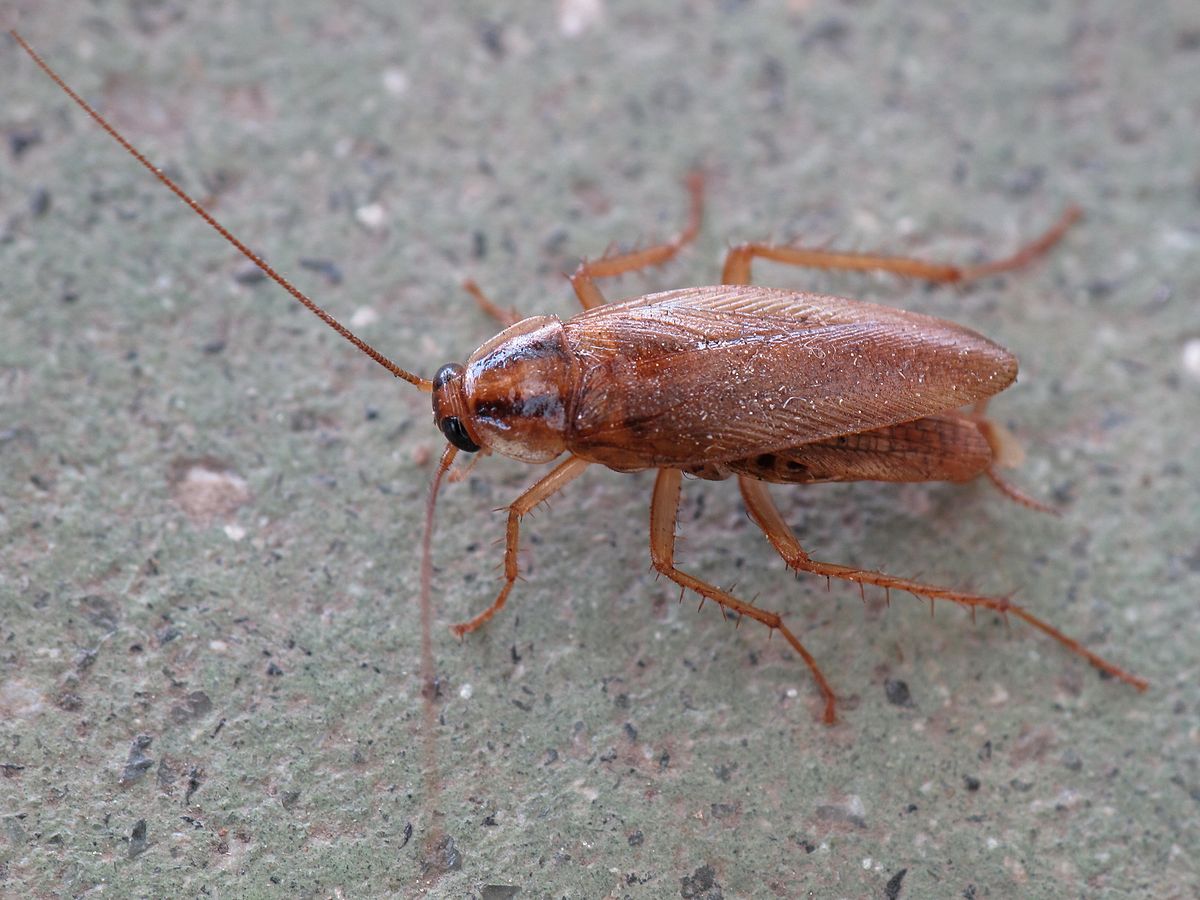Introduction to Blattella Germanica
Blattella germanica, commonly known as the German cockroach, is one of the most widely recognized household pests. Originating from Southeast Asia, this species has adapted remarkably well to human environments. These small insects thrive in warm, humid conditions and are notorious for their ability to reproduce quickly and survive in various environments, particularly urban areas.
Physical Description of Blattella Germanica
The German cockroach is relatively small compared to other cockroach species, typically measuring between 1.1 to 1.6 centimeters in length. Their color ranges from light brown to tan, with two dark, parallel stripes running from the head to the base of the wings. Despite having wings, Blattella germanica rarely flies and primarily relies on rapid scuttling to escape threats.
Life Cycle and Reproduction
Blattella germanica has an incredibly fast reproductive cycle, contributing to its status as a common household pest. A single female can produce up to eight egg cases in her lifetime, with each case containing approximately 30 to 40 eggs. Under optimal conditions, the development from egg to adult can take just over 100 days. This accelerated growth rate allows populations to explode in a short amount of time if left unchecked.
Habitat and Preferred Environments
The German cockroach favors warm, moist environments close to food and water sources. Common hiding spots include kitchens, bathrooms, behind appliances, and inside cabinets. In commercial settings, they are often found in restaurants, food processing facilities, and hotels. Their preference for indoor environments makes them especially problematic for homeowners and businesses alike.
Diet and Feeding Behavior
Blattella germanica is an omnivore and scavenger. Their diet consists of a wide range of food sources including crumbs, grease, meat, sweets, starches, and even non-food materials such as soap and toothpaste. They are nocturnal feeders, primarily searching for food at night, and can survive for weeks without food but only a few days without water.
Health Risks Associated with Blattella Germanica
One of the most significant concerns with a German cockroach infestation is the health risks they pose. Blattella germanica is known to spread pathogens such as Salmonella, E. coli, and other harmful bacteria. They can contaminate food, cooking surfaces, and utensils through their droppings, saliva, and shed skin. Additionally, their presence is linked to allergic reactions and asthma, particularly in children and sensitive individuals.
Why Blattella Germanica Is Difficult to Control
Several factors contribute to the difficulty in controlling Blattella germanica populations. Their rapid reproduction rate ensures that even if a portion of the population is eliminated, survivors can quickly repopulate the area. Furthermore, their ability to hide in small, inaccessible crevices makes complete eradication challenging. Over time, German cockroaches have also developed resistance to many common insecticides, requiring integrated pest management strategies to effectively control infestations.
Signs of a German Cockroach Infestation
Recognizing the signs of a German cockroach infestation is critical for early intervention. Typical indicators include spotting live cockroaches during the day, which often suggests a large population. Other signs include the presence of droppings resembling ground pepper, egg cases, shed skins, and a musty, unpleasant odor produced by the cockroaches themselves.
Prevention Tips for Homeowners
Preventing a Blattella germanica infestation involves maintaining a clean and dry environment. Homeowners should eliminate food and water sources by promptly cleaning up spills, storing food in sealed containers, and fixing leaks. Reducing clutter eliminates potential hiding places. Sealing cracks and crevices where cockroaches could enter is also crucial for prevention efforts.
Professional Treatment Options
When infestations are severe, professional pest control services are often necessary. Experts typically employ a combination of baiting, trapping, and insecticide treatments tailored to the specific infestation. In some cases, insect growth regulators are used to disrupt the reproduction cycle. Follow-up treatments and regular inspections ensure long-term control and prevention.
Blattella Germanica in Commercial Settings
In commercial environments such as restaurants and hospitals, a German cockroach infestation can have devastating effects on reputation and health compliance. Routine monitoring, sanitation protocols, and staff education are critical to preventing infestations. Many businesses also partner with professional pest management companies to develop customized prevention and treatment plans.
Natural Remedies and DIY Treatments
Some homeowners opt for natural remedies to combat Blattella germanica. Boric acid, diatomaceous earth, and essential oils like peppermint and tea tree oil are popular options. These remedies can reduce populations but may not be sufficient for heavy infestations. Consistent application and patience are required when relying on DIY methods.
Resistance to Insecticides
One of the more concerning traits of Blattella germanica is its growing resistance to commonly used insecticides. Studies have shown that some populations can survive multiple treatments, rendering certain chemicals ineffective. This resistance makes integrated pest management, which includes mechanical, biological, and chemical methods, a more sustainable and successful approach.
The Role of Sanitation in Cockroach Control
Good sanitation practices are foundational in controlling and preventing German cockroach infestations. Removing food debris, washing dishes promptly, cleaning under appliances, and disposing of garbage regularly minimize the attractants that support cockroach populations. Sanitation also enhances the effectiveness of baits and insecticides by reducing competing food sources.
Future Research and Innovations
Ongoing research focuses on finding new ways to manage Blattella germanica infestations. Scientists are exploring biological control methods such as introducing natural predators or parasites. Genetic studies aim to understand resistance mechanisms better, which could lead to more targeted and effective treatments in the future. Innovations in smart pest control technologies, such as monitoring systems that use AI to detect cockroach activity, are also emerging.
Conclusion
Blattella germanica is a persistent and resilient pest that poses significant challenges for homeowners and businesses alike. Understanding its biology, behavior, and the health risks it carries is crucial for effective prevention and control. While complete eradication can be difficult, combining good sanitation practices, monitoring, and professional pest management services can significantly reduce the risk of infestation.
Frequently Asked Questions about Blattella Germanica
What attracts Blattella germanica into homes?
Blattella germanica is attracted by food, water, and shelter. Crumbs, spills, garbage, and standing water are primary lures.
How quickly can a German cockroach infestation grow?
Under optimal conditions, a single pair of German cockroaches can produce thousands of offspring within a year.
Are German cockroaches dangerous to human health?
Yes, they can spread bacteria, cause food contamination, and trigger allergies and asthma, particularly in sensitive individuals.
Can I get rid of Blattella germanica without professional help?
Minor infestations can sometimes be controlled with diligent cleaning, baiting, and DIY treatments, but professional intervention is often required for severe cases.
What are the best methods to prevent a German cockroach infestation?
Effective prevention involves maintaining a clean, dry environment, sealing entry points, and regularly inspecting for early signs of infestation.

